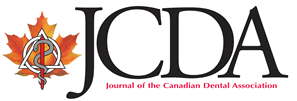 |
Current Issue | Subscriptions | ||||||
| Back Issues | Advertising | |||||||
| More Information | Classified Ads | |||||||
| For Authors | Continuing Education | |||||||
|
||||||||
 |
|
Efficacy of 3 Techniques in Removing Root Canal Filling MaterialFULL TEXT
• Emre Bodrumlu, DDS, PhD • A b s t r a c tMaterials and Methods: Extracted human teeth (90 maxillary anterior teeth with single,straight root canals and 90 mandibular molars with mesial canal root curvatures of 20° to 35°) were divided into 6 groups each consisting of 15 straight and 15 curved root canals. Three groups were obturated using gutta-percha/AH Plus and 3 were obturated with Resilon/Epiphany. After 3 weeks storage at 37°C and 100% humidity, all root canal fillings were removed using a Gates Glidden drill, a Gates Glidden drill plus chloroform or a System B device. Results: For all removal techniques, specimens obturated with gutta-percha/AH Plus showed significantly more remnants of obturation material than specimens filled with Resilon/Epiphany for both straight and curved canals (p < 0.05). Removal time was shorter for Resilon/Epiphany than gutta-percha/AH Plus filling for all techniques and for both curved and straight canals. The Gates Glidden drill and Gates Glidden drill plus chloroform removal techniques were significantly faster than the System B technique for both straight and curved canals. The Gates Glidden drill technique was best for straight canals, whereas the Gates Glidden drill plus chloroform was the best technique for curved canals when removing Resilon/Epiphany sealer. Conclusions: Removal of Resilon/Epiphany filling resulted in fewer remnants and was faster than gutta-percha/AH Plus removal using a Gates Glidden drill with or without chloroform in both straight and curved canals.
|
|
|
Full text provided in PDF format |
|
| Mission Statement & Editor's Message |
Multimedia Centre |
Readership Survey Contact the Editor | Français |
|